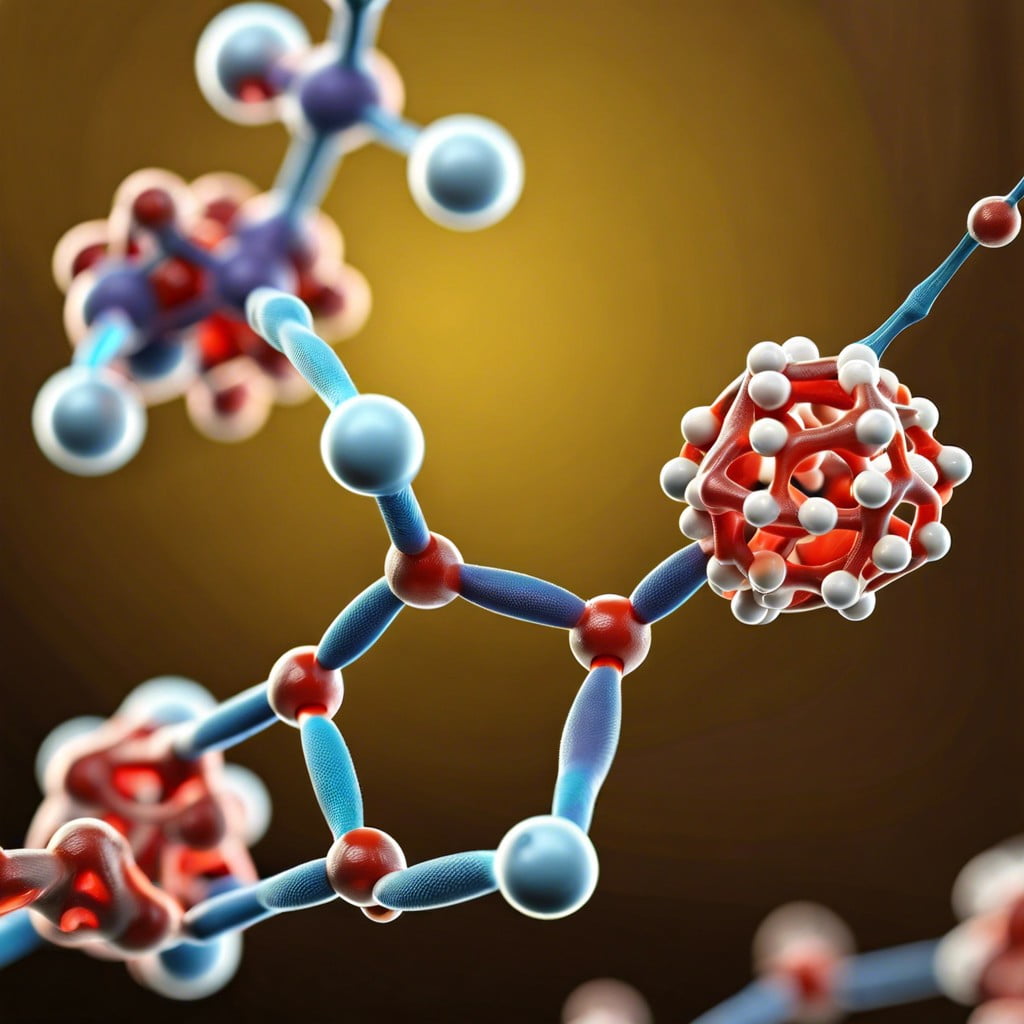In this comprehensive guide, you will gain a clear understanding of polymers in biology, their types, structure, function, and significance.
Key takeaways:
- Polymers are large molecules composed of repeating units called monomers.
- Polymers in biology have various roles, such as forming cells and storing energy.
- Polymers are formed through polymerization and broken down through depolymerization.
- Examples of biological polymers include DNA, RNA, proteins, and polysaccharides.
- Biological polymers have unique properties and applications in nature.
Polymer Definition

Polymers are large molecules composed of repeating structural units called monomers. These monomers are covalently bonded to form a long and sometimes complex chain. In biology, polymers play crucial roles, such as forming the structure of cells and organisms, storing energy, and transferring genetic information.
The specific sequences and arrangements of monomers give each polymer unique characteristics and functions. Examples include DNA and RNA, responsible for genetic inheritance and protein synthesis, as well as polysaccharides like cellulose and starch, key to energy storage and structural integrity in plants.
How Polymers Are Formed and Broken Down
In biological systems, polymers form through a process known as polymerization, where monomers, the building blocks, link together. Enzymes in cells facilitate this linking, creating long chains or branches. For instance, amino acids polymerize to form proteins, while nucleotides connect to create nucleic acids such as DNA and RNA.
The reverse process, breaking down polymers, is called depolymerization. This happens through chemical reactions that involve water, a process called hydrolysis. Enzymes play a key role again, cleaving the bonds between monomers, effectively dismantling the polymer chain into its original units. This breakdown is crucial for various biological functions, including digestion, where complex food polymers are broken down into simpler substances the body can absorb and use.
Common Examples of Biological Polymers
DNA (deoxyribonucleic acid) plays a central role in genetic information storage and transmission; its double helix structure is a familiar image embodying biological complexity.
RNA (ribonucleic acid), while similar to DNA, functions in translating genetic code into proteins, among other roles.
Proteins are workhorse molecules that perform a vast array of functions, from catalyzing biochemical reactions as enzymes to providing cellular structure and support.
Polysaccharides include substances like cellulose, which forms the rigid cell walls in plants, and glycogen, used for energy storage in animals.
Lipids, though sometimes not strictly polymers, they can form complex structures such as cell membranes through the aggregation of molecules like phospholipids.
Nucleic acids, proteins, polysaccharides, and lipids represent the foundational structures upon which the myriad functions of living organisms are built. Each offers a unique set of characteristics that contribute to the complexity and diversity of life.
Properties of Biological Polymers
Biological polymers exhibit a wide array of properties, reflecting their diverse roles in nature:
- Complexity and Hierarchy: These molecules are often composed of simple subunits that combine in various complex arrangements, creating a hierarchy of structures from primary to quaternary levels.
- Specificity: Each polymer has a unique sequence that dictates its specific function, such as the precise order of amino acids in proteins leading to distinct biological activity.
- Solubility: The solubility in water or other solvents varies among polymers, essential for their transport and function within organisms.
- Thermal Stability: These polymers are designed to remain stable under the temperatures typically found in biological systems, ensuring functionality.
- Degradability: Enzymatically degradable, they can be broken down into their monomeric units for recycling or energy extraction within the organism.
- Mechanical Properties: Many have structural roles, exhibiting tensile strength and flexibility, crucial for muscles or cellular architecture.
Applications of Biological Polymers in Nature
Biological polymers are fundamental to myriad natural processes and structures:
- DNA, the blueprint of life, guides cell function and heredity through its polymeric structure, consisting of nucleotide chains.
- Proteins perform a vast range of biological functions, including acting as enzymes to catalyze biochemical reactions, structuring cells, and regulating body tissues.
- Polysaccharides, like cellulose, give plants structural support, whereas chitin provides rigidity to the exoskeletons of arthropods.
- In animals, collagen, a protein polymer, forms connective tissues, offering strength and elasticity.
- Starch and glycogen serve as energy storage polymers in plants and animals, respectively, readying them for future metabolic needs.
These natural polymers showcase the diversity and complexity of living organisms, playing crucial roles in both structure and function.
FAQ
What is a polymer in biology?
A polymer in biology is a large molecule composed of numerous smaller molecules, called monomers, linked together in a chain-like structure.
What is a polymer easy definition?
A polymer is a large molecule that is formed by chemically linking many smaller molecules, known as monomers, in a chain-like structure.
What is polymer one word answer?
A polymer is a macromolecule formed by the combination of many small units called monomers.
Which is an example of a polymer?
One example of a polymer is DNA.
How are polymers formed in biological systems?
Polymers in biological systems are formed through a process known as polymerization where several molecules, called monomers, bond together to create a large and complex molecule, the polymer.
What roles do polymers play in the structure and function of living organisms?
Polymers, specifically biopolymers like DNA, RNA, and proteins, play crucial roles in the structure and function of living organisms, serving as the genetic information carriers, agents of biochemical reactions, and key components for cellular structure.
What are the differences between natural and synthetic polymers?
Natural polymers occur in nature and can be extracted, while synthetic polymers are man-made using chemical processes.
Recap




